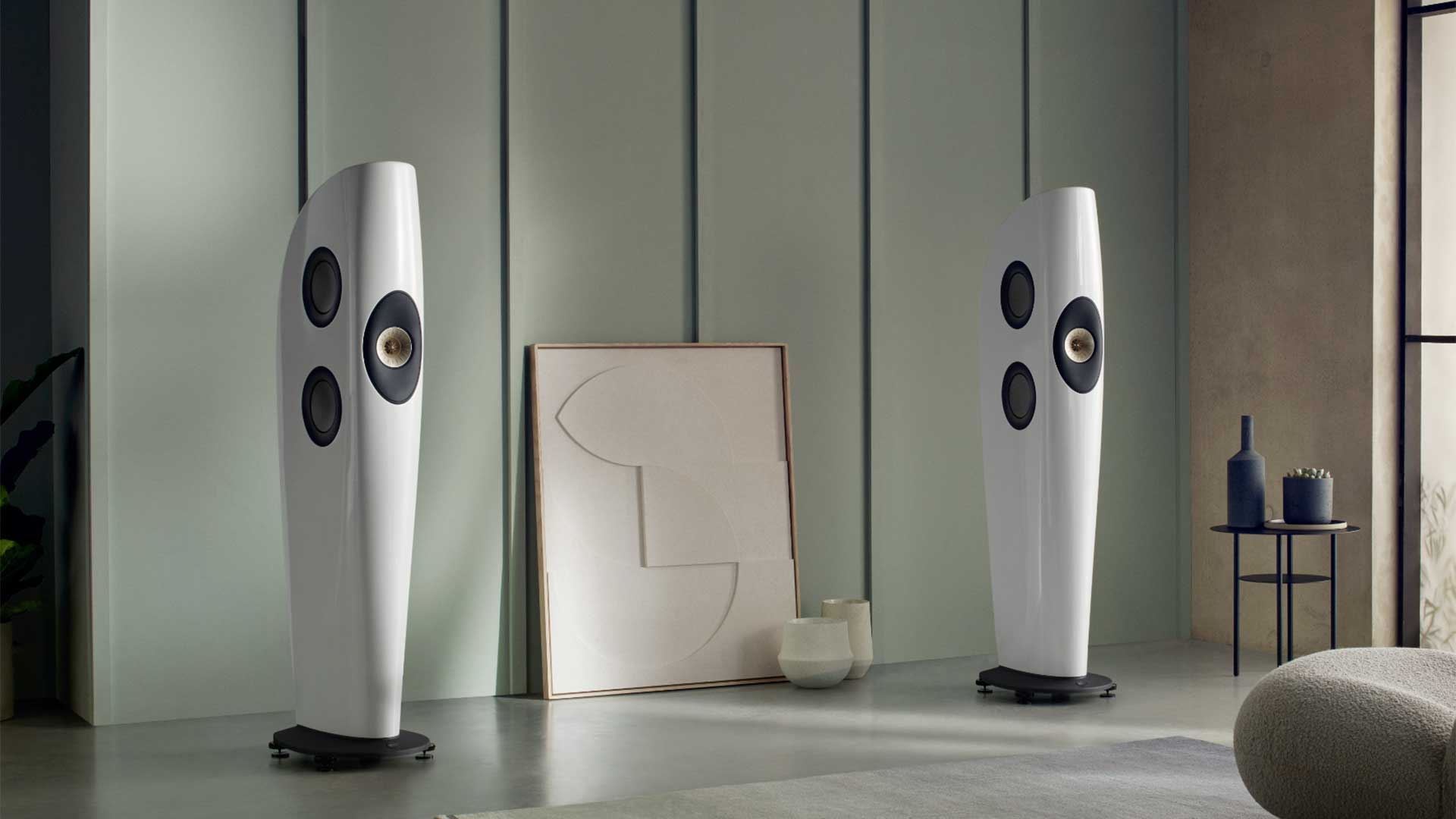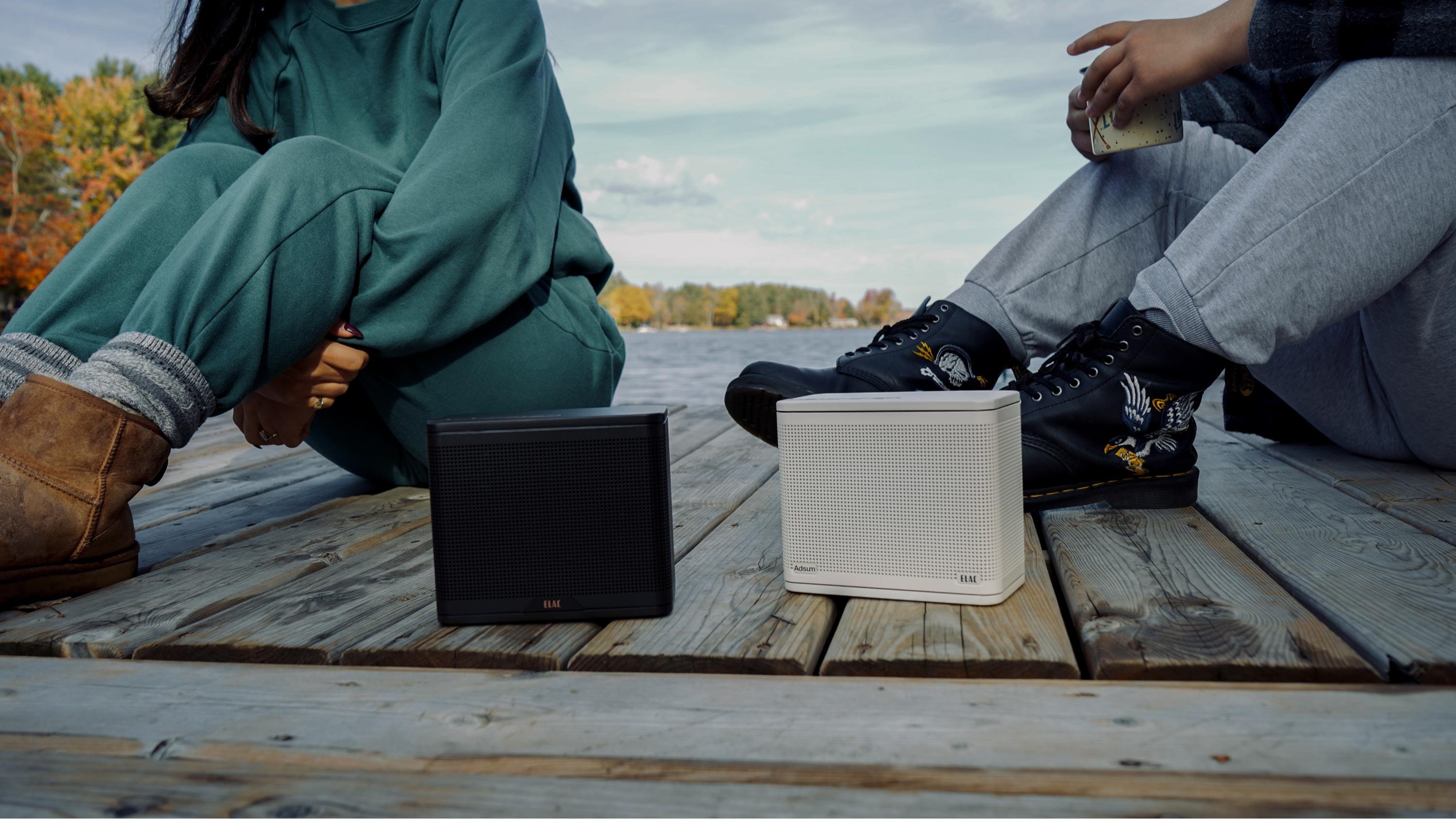Sound+Image Verdict
If you’re seeking speakers that will do the hi-fi deed of transporting you into the time-capsule of a recording, the Blades are waiting to astound you. You’ll be amazed by the design, the finish, the sheer style of this cutting-edge design. But the looks are not for their own sake; they serve the overarching concept of a single point source for sound. KEF’s Blades are absolutely all about the music.
Pros
- +
Stunning soundstaging
- +
Meta technology proves itself again
- +
Unique and gorgeous looks
Cons
- -
A little light on ultimate bass
- -
Price
Why you can trust What Hi-Fi?
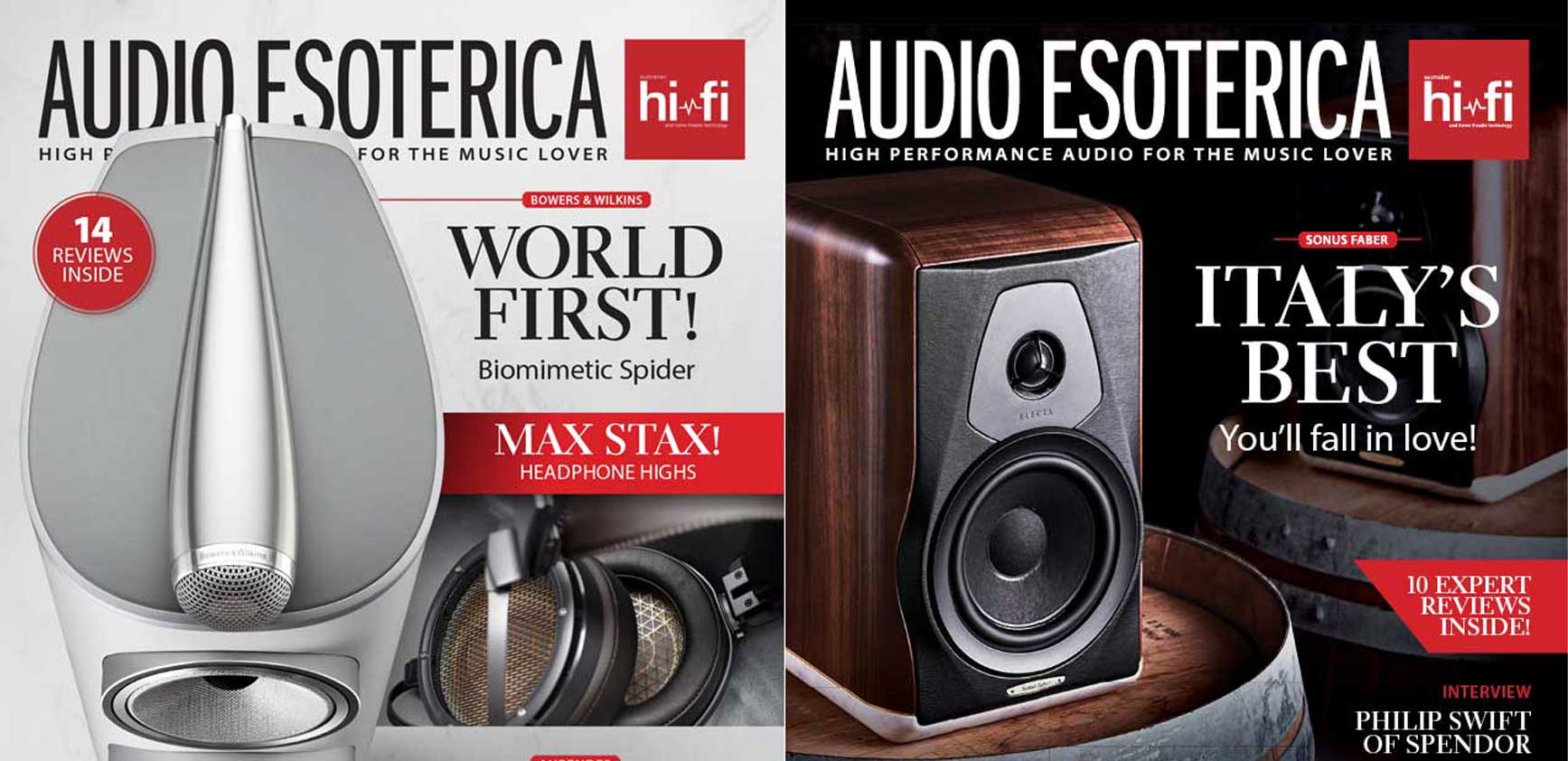
This review originally appeared in Audio Esoterica magazine, one of What Hi-Fi?’s Australian sister publications, available in print and digital editions Click here for for a Readly special offer, including access to Audio Esoterica's digital editions.
Stereo sound is a remarkable illusion. Using just two speakers we are able to enjoy a spread of sound within which multiple individual instruments can be positioned accurately, audibly separated from each other – a guitar here, a violin there – and each sound still reproduced with its individual tone, even gifted an individual sense of acoustic space around it. The best and most accurate stereo speakers can deliver the sense of a front-to-back plane as well as left and right.
But there is a problem. To achieve the very purest of soundfields, you would want only a single driver in each speaker. As soon as you have separate tweeters and woofers, the sound of each originates from a slightly different place, and those two outputs will interfere, breaking down your sound field across the frequency region in which they cross over as they interfere destructively or additively to produce regions of raised and attenuated sound around the speaker.
The stereo illusion only works perfectly if all the sound comes from a single position on each speaker.
And that requirement is the raison d’etre behind KEF’s most famous component, the Uni-Q driver. This houses a tweeter physically within a midrange driver, so that the two drivers are truly aligned, truly coincident, and so offer a true point source to the listener for the midrange and treble. The sound from the two radiating elements travels the same path to the ear, and should also ensure that reflections will be tonally similar to the direct sound, allowing the human brain to filter out the room much more effectively.
Bass frequencies are, of course, relatively non-directional, so that in most KEF speakers, as in those by other manufacturers, the bass units are further down the cabinet in a position where they will benefit most from the room and will integrate well enough with the midrange and treble above. But they will still inevitably interfere with the midrange driver’s output in the manner described. So could you design a speaker where all the drivers are positioned so as to present a virtual single source of sound across the entire frequency range?
Yes you could. It’s called the Blade.
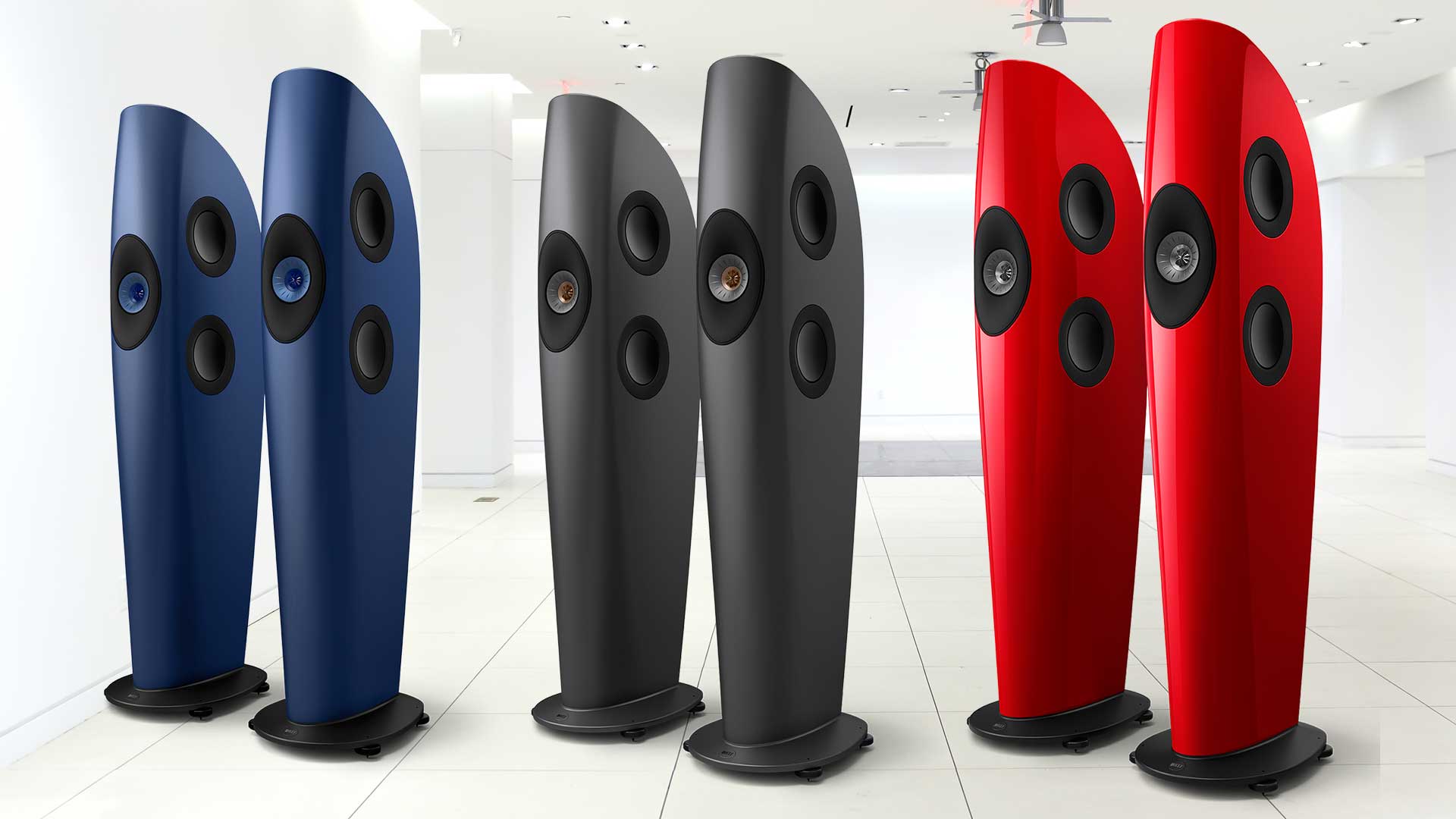
From Uni-Q to S.A.S.
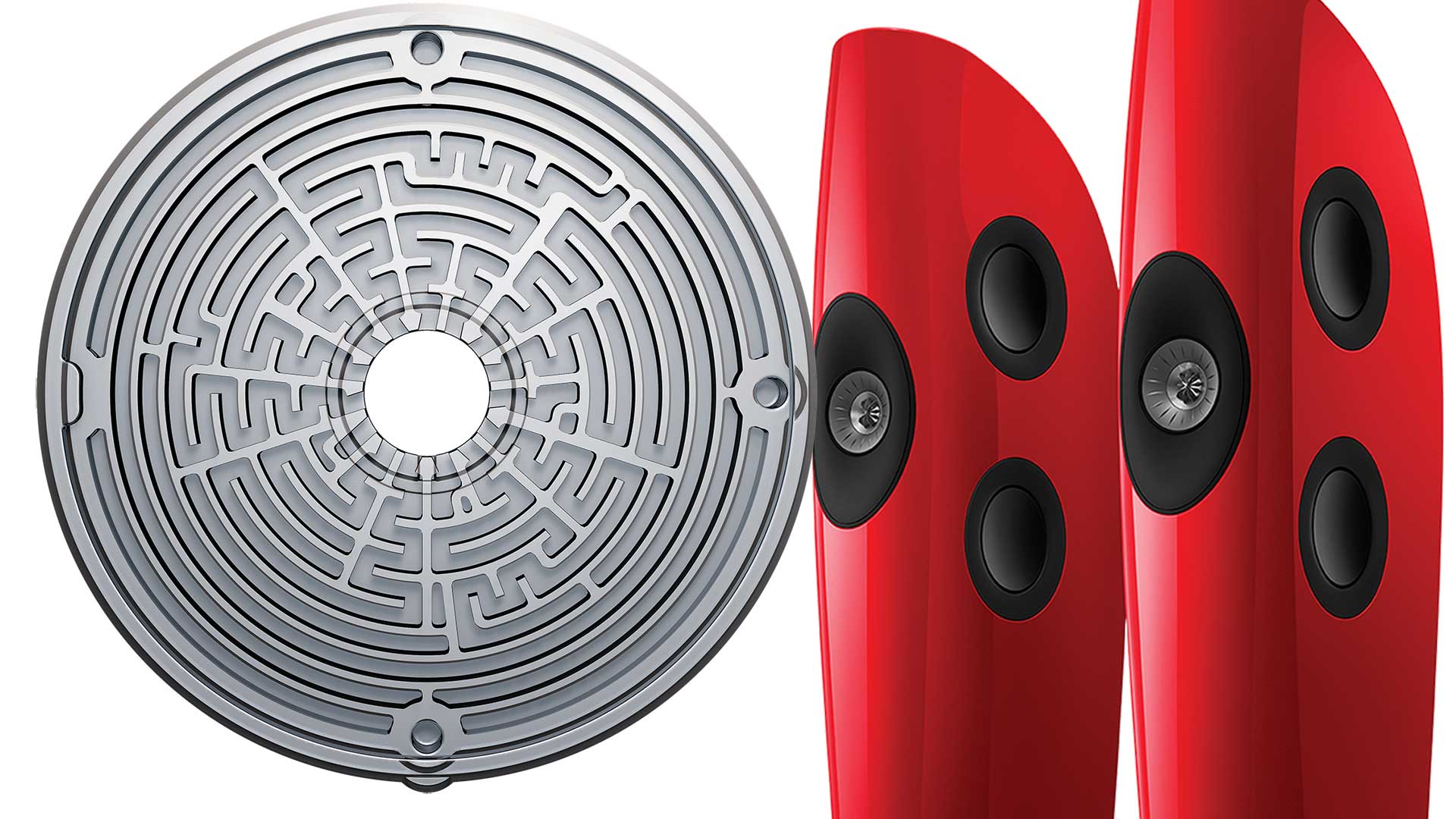
Type: three-way bass reflex
Drivers: Uni-Q 25mm aluminium-dome tweeter with MAT and 125mm aluminium-cone midrange; 4 x 165mm aluminium-cone woofers
Crossover frequencies: 450Hz, 2.2kHz
Sensitivity: 86dB (2.83V/1m)
Impedance: 4Ω (min. 3.2Ω)
Quoted frequency response: 33Hz-35kHz ±3dB
Weight: 35.5kg
Dimensions (hwd): 1461 × 338 × 475mm (with plinth)
Available finishes: Piano Black/Copper, Piano Black/Grey, Frosted Blue/Blue, Frosted Blue/Bronze, Charcoal Grey/Red, Charcoal Grey/Bronze, Racing Red/Grey, Arctic White/Champagne, Pantone specials available
The way KEF tells it, the original Blade was never intended for production; it was a styling exercise by Mark Dodd and KEF’s research team, although it’s hard to believe such an expensive experiment could be entirely conceptual in its ultimate goals. Nevertheless, when the ‘Concept Blade’ was demonstrated at the High End Show in Munich back in 2009, the public and press response seemed to take KEF by surprise.
Calls for a ‘production’ run of Blades from potential customers and distributors were stymied by the complex cabinet construction that had been used to realise the Concept Blade’s curves – a sandwich of carbon-fibre, balsa and more carbon-fibre that would have been unthinkably expensive in short runs, and impossible to scale up for full-scale production.
The latest hi-fi, home cinema and tech news, reviews, buying advice and deals, direct to your inbox.
Yet the Concept Blade was an idea that clearly worked – an extension of the Uni-Q concept that would match directivity across the full bandwidth of the loudspeakers. KEF christened it the ‘Single Apparent Source’.
“We’re always very focused on directivity”, says KEF’s VP of Technology Dr Jack Oclee-Brown. “How is the sound travelling from the loudspeaker towards you and into your room? That’s what led us to develop Uni-Q. Single Apparent Source takes that further. We take Uni-Q and we place four bass drivers around it symmetrically, so we can control directivity and drive the sound from one source in space across the entire spectrum. The whole audio spectrum appears to emanate from a single point in space.”
So the design team began work on a more easily reproducible form for the Blades, settling on a stiff glass-reinforced composite material for the cabinet, making possible the original commercially-available iterations, the Blade, and later the slightly smaller Blade Two. There was far more to them than just the cabinet and configuration – each element brought new innovations, from the powerful vented tweeter with stiffened dome and that distinctive ‘tangerine’ waveguide, to the diaphragm decoupling and force-cancelling implementation of the bass drivers. Such side-firing drivers can be useful in controlling room modes, but are unwelcome, even heresy, in some high-end markets. But as the Concept Blade had never really been intended to reach consumers, the attitude had been “let’s do it anyway”.
Side-firing woofers meant that the Blades’ front baffle could be remarkably minimalist.
“The width of the bass driver is normally what determines how wide a speaker is,” notes Dr. Oclee-Brown. “But by using Single Apparent Source [technology] where you put bass drivers on the side, you overcome that. Suddenly, the speaker width can be determined by the Uni-Q driver. With Blade, we were trying to create something very, very high performance, so the whole thing ends up being 200mm wide but still has nine-inch bass drivers. If the bass drivers were on the front, the width would have been 350mm.”
Two years later at Munich in 2011, KEF revealed the Blade that we could buy. The bass driver array was just slightly smaller, but they were still locked together in opposing formation to cancel out each other’s vibrations and prevent forces from passing to the cabinet itself, while positioned so that their acoustic centres, as it were, occupy exactly the same point in space as that of the Uni-Q unit above.
The Blade aimed to deliver the dream of KEF’s founder Raymond Cooke: a virtual point source that allowed the speakers to deliver sound in the most natural way possible – “without drama, without exaggeration, without artifice.”
The launch of the original Blades was fortuitously timed (or perhaps perfectly planned) for KEF’s 50th anniversary. The company is now celebrating its 60th, and has a whole raft of new product for 2022. The Single Apparent Source concept is realised in miniature for the new active LS60 Wireless floorstanders, then there are new little LSX Mk2 wireless standmounts, an entire new Reference series – and new versions of both sizes of Blade.

Put a MAT in it
The new Blades are called the Blade One Meta, and the Blade Two Meta. The ‘Meta’ tag is short for ‘metamaterial’, and specifically KEF’s patented Metamaterial Absorption Technology (MAT), which has garnered rave reviews for its effect on the current LS50 Meta and LS50 Wireless II. The MAT is a disc that looks like a garden maze (or, as some pointed out upon its original release, like the map which appears in the first season of HBO series Westworld). The disc sits behind the tweeter and absorbs the rear soundwave radiated by the tweeter dome, which can otherwise cause distortion when reflected back into the dome.
Some companies use long tapered tubes behind the tweeter to absorb this energy: the Nautilus tubes used by Bowers & Wilkins and Vivid Audio are two such examples. But the 30 channels of differing lengths in the MAT disc effectively provide a similar but far more compact solution, with each closed tube acting as a quarter-wave resonator tuned to a different frequency, absorbing a narrow frequency band and its harmonics. By overlapping the bands, KEF claims 99% absorption down to 620Hz, well below the lower working frequencies of the tweeter. KEF says this is equivalent to a well-designed tapered tube 50cm long, but squeezed into a disc just over 1cm deep.
Strictly speaking, a metamaterial is defined as one which has repeating elements at a small scale that give it unique qualities, and Dr. Jack confirmed to us that really, KEF’s MAT fails that definition by not using either micro-sized or repeated elements. But KEF has so successfully embedded the Meta concept in the minds of hi-fi fans around the world, we’ll let that small distinction slide. Besides, there’s far more to the new Blades than adding the MAT.
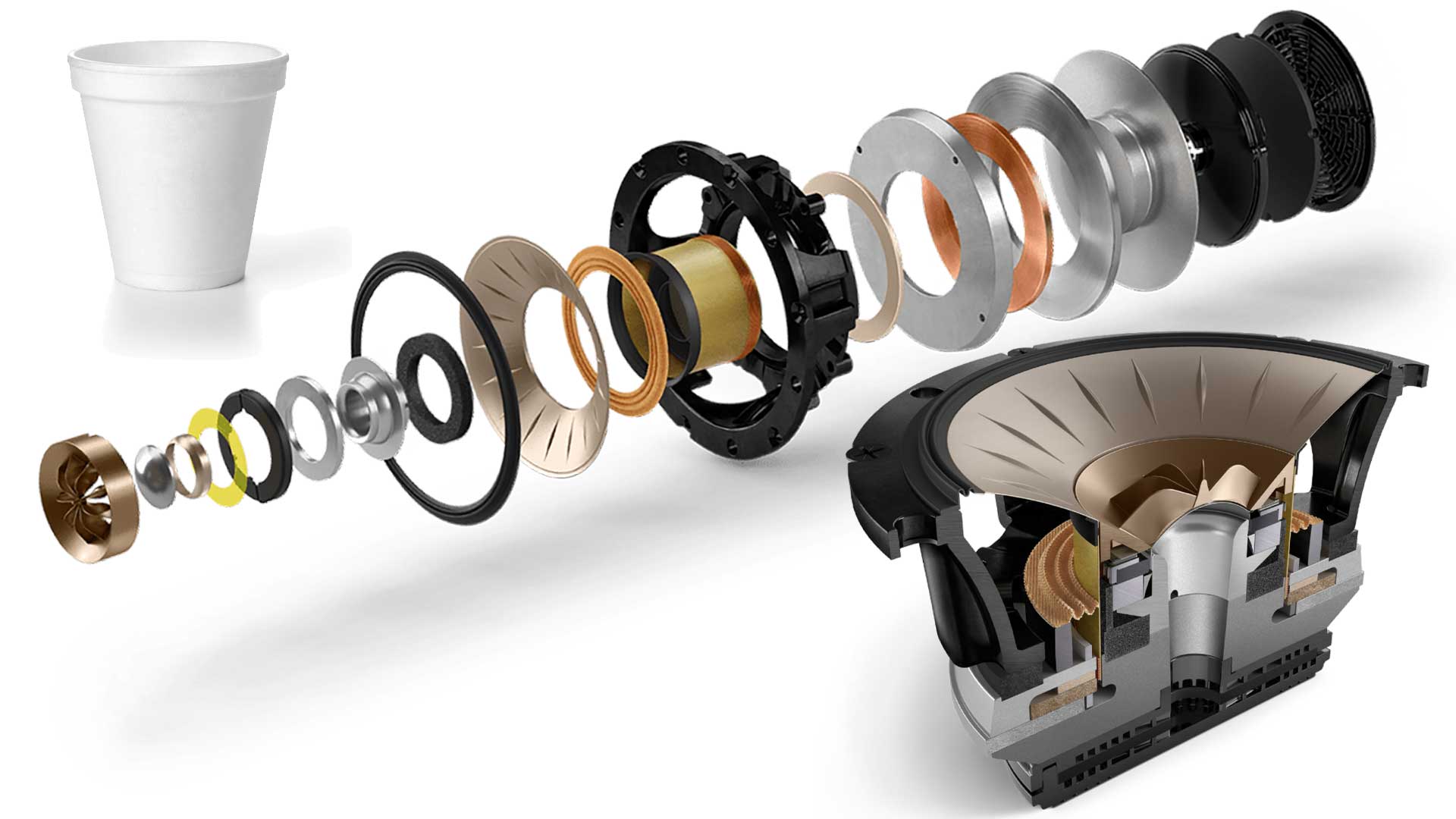
12th-gen Uni-Q
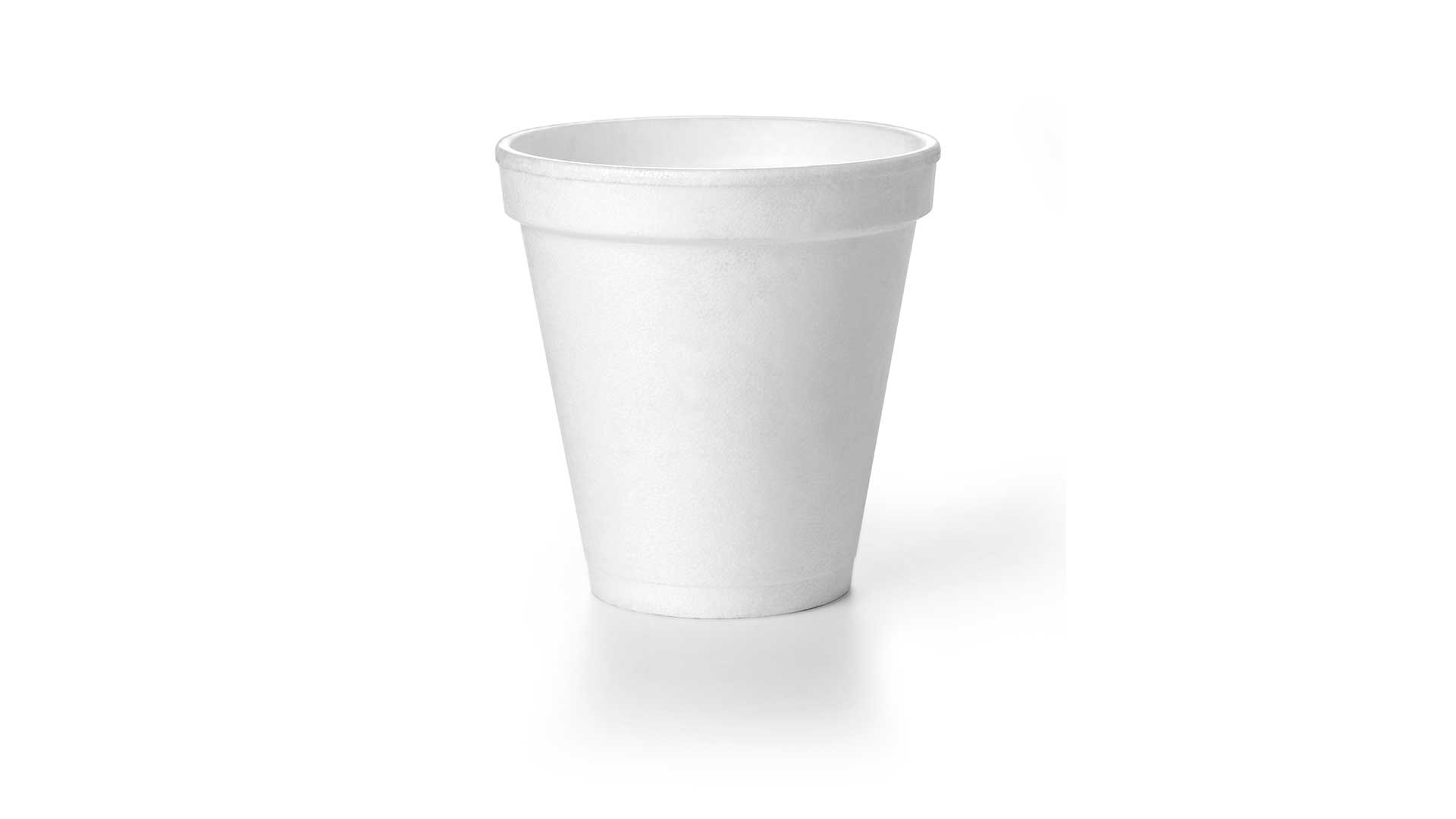
It started with a mass-produced polystyrene cup, the kind used for hot drinks, made by vacuum-forming the foamed plastic over a shaping tool.
These were patented in the US in 1957, at which time one Raymond Cooke was designing loudspeaker drive units as Technical Director of Wharfedale, a position he’d taken after working for the BBC’s Designs Department. By 1960 the humble polystyrene cup had made its way across the Atlantic, and when Cooke saw one, the proverbial light bulb illuminated above his head. His driver cones were made from paper pulp in a process that was expensive, time consuming and difficult to achieve consistently.
Suddenly, here was a new technique, a new material — and one suited to mass production. Could drive units be formed in the same way?
Cooke thought they could, but after Wharfedale was sold to the Rank Organisation in 1959, the new owners were unresponsive to his excitement. So in 1961 Cooke left the company and set up his own — the Kent Engineering & Foundry. ‘KEF’ was born.
KEF notes that of equal importance to the MAT is how the back wave is channelled into that disc.
To prevent the MAT itself reflecting the sound wave, a tapered duct with a conical profile reduces in diameter towards the disc opening.
And that required a complete redesign of the area behind the tweeter, which in turn required a significant new iteration of the company’s famous Uni-Q driver. Both the midrange and tweeter elements have been designed from the ground-up for use with MAT, while also including the Tweeter Gap Damper introduced in the 2018 ‘R’ Series speakers to deal with small resonances from the gap between the moving midrange voice coil and the stationary tweeter waveguide. This gap cannot be sealed without restricting movement of the midrange driver, so KEF’s solution instead creates an internal cavity with acoustic damping to tame the resonances.
The tangerine waveguide also required attention after the addition of the MAT disc, when KEF noted low-level coloration from deformation of certain plastic components of the waveguide and the dome surround support. This was addressed by adding extra ribs for strength on the rear of the tangerine waveguide.
The midrange driver received a new motor system with an extremely strong neodymium ring magnet, improved suspension and a redesigned spider with reduced mass that moves its resonance out of the driver’s operating band. Much as Bowers & WIlkins has moved to a skeletal spider frame for its 800 Series midrange cones, KEF has reduced the Blade’s midrange spider width to a mere 6.9mm.
There’s also a new flexible decoupling method for the midrange chassis, using eight flexible struts that look like leaf springs from trucks in the 1950s, jokes Jack Oclee-Brown, along with additional decoupling material. The decoupling separates the motor assembly from the rest of the driver and thus the cabinet, so that the chassis is still resiliently mounted, but with this mechanism moved away from the rim to avoid cabinet coloration. KEF’s graphs show a significant reduction in resonance with the new damping system.
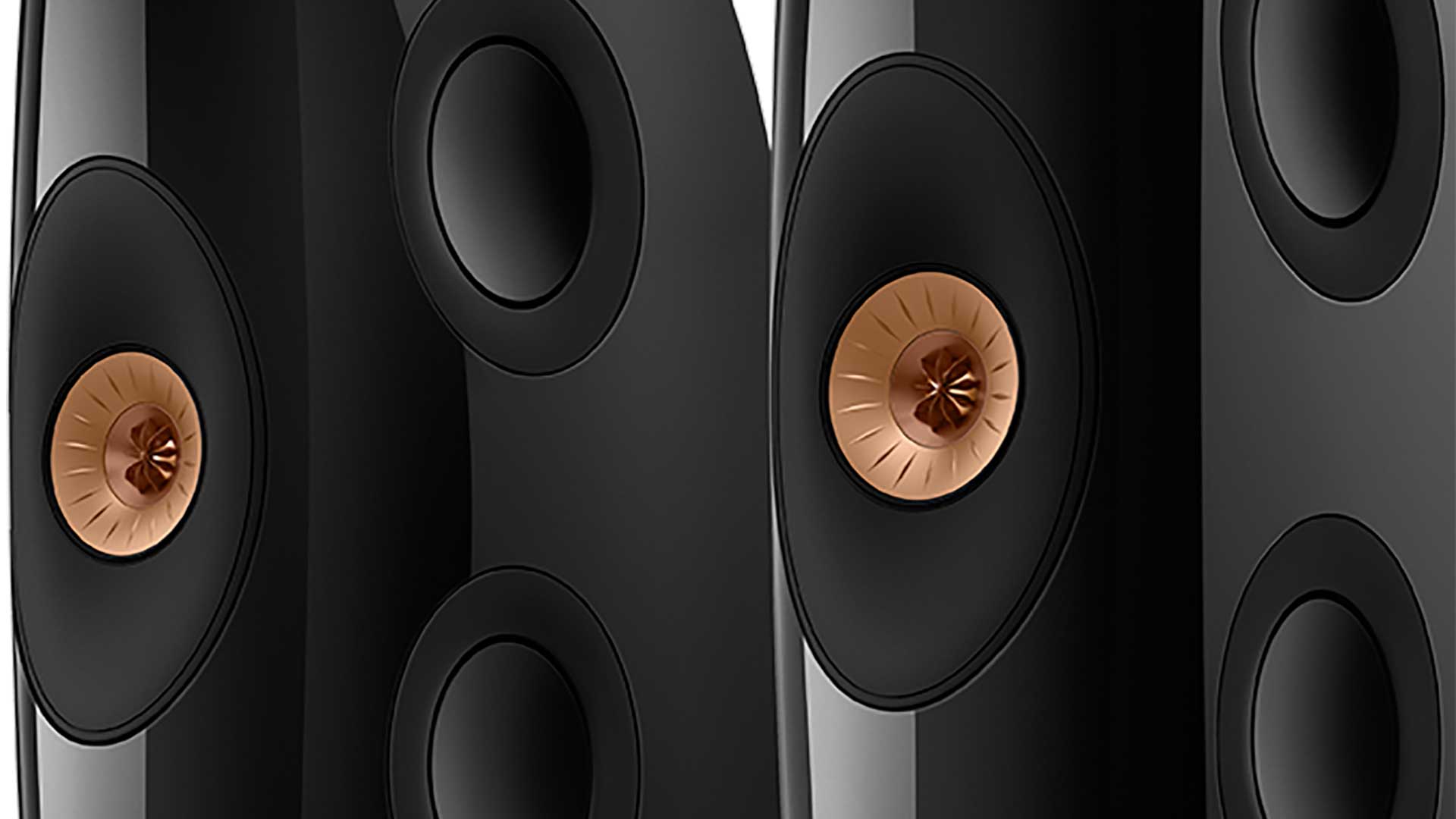
Single-source bass
While other companies have tried combining tweeters and midrange as a coincident source, few have tried getting bass to join the single-point party. KEF’s solution is elegant. Each pair of side-firing drivers operate in opposition, which allows for carefully-designed force cancellation along their axis to minimise cabinet vibration.
KEF has not here used the extremely cunning ‘Uni-Core’ drivers as in the ‘miracle’ KC62 subwoofer and LS60 Wireless floorstanders; in Uni-Core there is a single driver system with just one magnet and chassis but two voice-coils and two cones operating in opposing directions. In the Blade Meta models the LF drivers are separate but bonded together back-to-back using bolts and a bituminous material.
So effective is the force cancelling that we’re told KEF demonstrations sometimes include putting a coin on its edge atop the Blade, then crank the volume to show how little vibration is occurring. (The difficulty, one imagines, would be finding anywhere on the Blades’ curved cabinets that would support such a coin.)
The cone material on the Blades is aluminium, so promising a matching tonal response to the aluminium-cone midrange and aluminium-domed tweeter in the Uni-Q module.
The Uni-Q unit is the same between both the larger and smaller Blades, while the larger Blade One Meta has four 225mm (9-inch) drivers, while those in the Blade Two Meta are 165mm (6.5-inch). The cabinet size is the main other difference: the smaller Blades are 146cm high, compared with the 159cm-high Blade One Meta.
If these were rectangular boxes, we could tell you that the dimensions of the bigger speaker give it 33% greater volume inside… but with the cunning curves we couldn’t say if this relationship holds, especially as the weight increases 62% between the two. Curiously the quoted frequency response for the smaller speaker bottoms out lower (33Hz-35kHz, -3dB) than does the larger Blade (35Hz-35kHz, -3dB), but the expected balance is restored in the quoted typical in-room bass response, 25Hz (-6dB) for the Blade Two Meta, 20Hz (-6dB) for the larger One Meta.

Listening sessions
We listened to the Blade Two Meta in Audio Connection’s shiny new listening rooms in Leichhardt, Sydney, on the end of a Linn/Gryphon system including the monumental Gryphon Apex Stereo power amp and Commander preamplifier; suffice to say here that the Blades could surely not hope for more distinguished partners in music.
But before turning to the sound, we simply must wax lyrical about the design itself – utterly modern and, we reckon, unlikely to look dated until at least the next millennium. We gather the original Blade design was a collaboration between KEF’s Planning & Design teams and Eric Chan of ECCO Design in New York, and that the width was minimised both to improve diffraction patterns from the front Uni-Q unit and to bring the opposed bass drivers as close to each other as possible. (Additional inspiration becomes clear when you see any of a series of soaring 1920s ‘Bird In Space’ sculptures by Romanian-born Parisian Constaninn Brancusi.)
The Blade Two Metas stood proudly in their ‘Frosted Blue/Bronze’ finish, where the luscious curves of the cabinet and the driver surfaces are all coated in a matte blue, while the tangerine waveguide of the Uni-Q unit is finished in bronze. (There are eight finish variations overall, with special orders also possible.) The quality of finish is even more remarkable when you hear KEF’s statement that “every Blade loudspeaker is built as a pair by one craftsman from start to finish.”
We warmed up the room with some favourites, and during this period kd lang’s version of The Air that I Breathe (from ‘Drag’) was one track that immediately impressed; it’s a pleasant listen through any system but does present a few challenges for hi-fi, needing delicacy for her voice, good separation to highlight far-flung elements like the right-channel snare-drum brushwork, but also resolving power when she brings in stacked harmonies for the chorus. Lesser audio systems flatten these down into a blur; with good systems you can hear every layer.
Well, in a nutshell, we’ve never heard this track sound so right, those widely-positioned brushes in particular, but also a perfect crispness to her vocal that lifted it from the soundstage, revealing every nuance, but with zero overemphasis, no push, no sibilance. Up to the chorus and there was no compression whatsoever of those stacked harmonies, each layer audible – almost visible – within a full spread of sound that was simultaneously both a window into the mixing minutiae and yet also sounding utterly studio real. Right up to the fade-out the Blades were revealing new instrumental details within the sliding strings arrangement.
Revelation of detail, then, is one key characteristic here. Another is the opening up of mixes that the Blades achieve, a sense of space delivered both in the soundstaging and even more critically in the speed and timing of the Blades, no doubt assisted by the utterly effortless power of the Gryphon Apex Stereo amp. We played Philip Glass’s 1000 Airplanes on the Roof not from our usual vinyl album but a version streaming on the Linn Klimax DSM from Qobuz, performed by French-Canadian chamber orchestra Les Violons des Roys. Their version has a wailing lead male vocal which is a little too foregrounded compared with the female vocal on the LP we know, but mercy, the orchestral space behind it was absolutely magnificent, so open and clear of confusion, with all the instruments so naturally portrayed in their attack and decay. The gaps between instruments and the gaps between notes combined to yield the impression of a background silence over which the performance punched out into the room.
One reason we had played this track was to check the bottom octave of bass, which seemed just a little light, despite the Blade 2 Meta’s stated low-end of 35Hz at -3dB. Another track for testing that is Neil Young’s Walk With Me, from ‘Le Noise’, where there’s a bass note over the opening chords and periodically through the track which drops into the 30s of hertz. The KEFs didn’t roll it out in full, though it was certainly present.
Similarly when we tried Tyler, The Creator’s EARFQUAKE, the KEFs were magnificent at teasing out some lovely piano on the opening that we’d never heard so clear in the mix, but the insane three descending bass notes that follow this section were much curtailed, with a particular dip notable on the bottom A in the middle of the three notes; the G below was in fact slightly stronger.
Conclusion: those wanting a full bass capable of handling modern electronica might consider incorporating a large subwoofer (or two) just for that very bottom octave.
Because everything above that seemed faultless and thrilling, and comparing with our notes from listening to the original Blade Two, it seems that Meta MAT behind the Uni-Q is doing a spectacular job in clarifying the treble and also midrange to new levels. Classical fans in particular will swoon at the Blades’ presentation of both concert and studio orchestral performances; the timbral accuracy is extraordinary, and the soundstaging breathtaking.
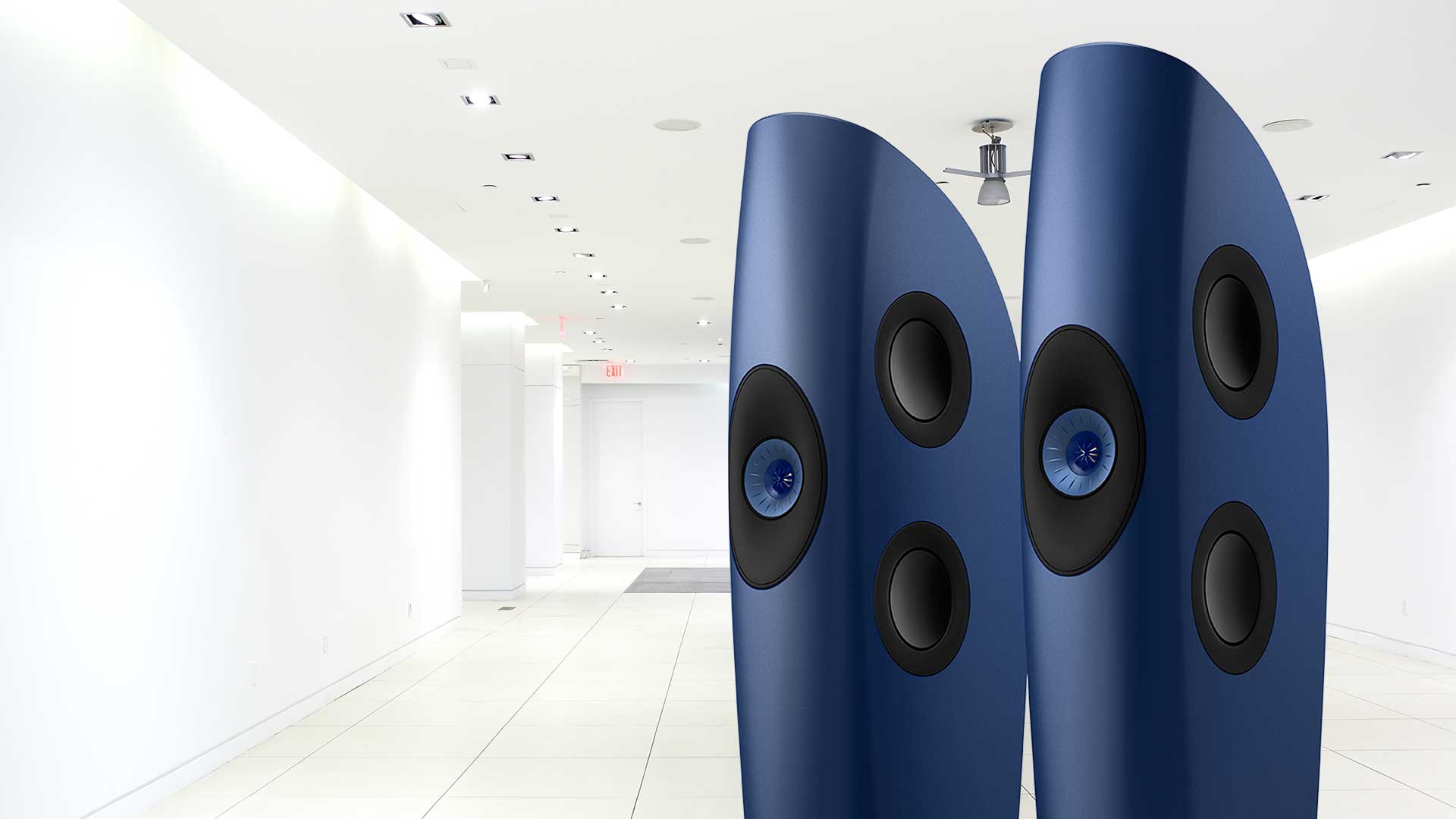
Verdict
If you’re seeking speakers that will do the hi-fi deed of transporting you into the time-capsule of a recording, the Blades are waiting to astound you. You’ll be amazed by the design, the finish, the sheer style of this cutting-edge design. But the looks are not for their own sake; they serve the overarching concept of a single point source for sound. So they may look amazing, but KEF’s Blades are absolutely all about the music.

Jez is the Editor of Sound+Image magazine, having inhabited that role since 2006, more or less a lustrum after departing his UK homeland to adopt an additional nationality under the more favourable climes and skies of Australia. Prior to his desertion he was Editor of the UK's Stuff magazine, and before that Editor of What Hi-Fi? magazine, and before that of the erstwhile Audiophile magazine and of Electronics Today International. He makes music as well as enjoying it, is alarmingly wedded to the notion that Led Zeppelin remains the highest point of rock'n'roll yet attained, though remains willing to assess modern pretenders. He lives in a modest shack on Sydney's Northern Beaches with his Canadian wife Deanna, a rescue greyhound called Jewels, and an assortment of changing wildlife under care. If you're seeking his articles by clicking this profile, you'll see far more of them by switching to the Australian version of WHF.
